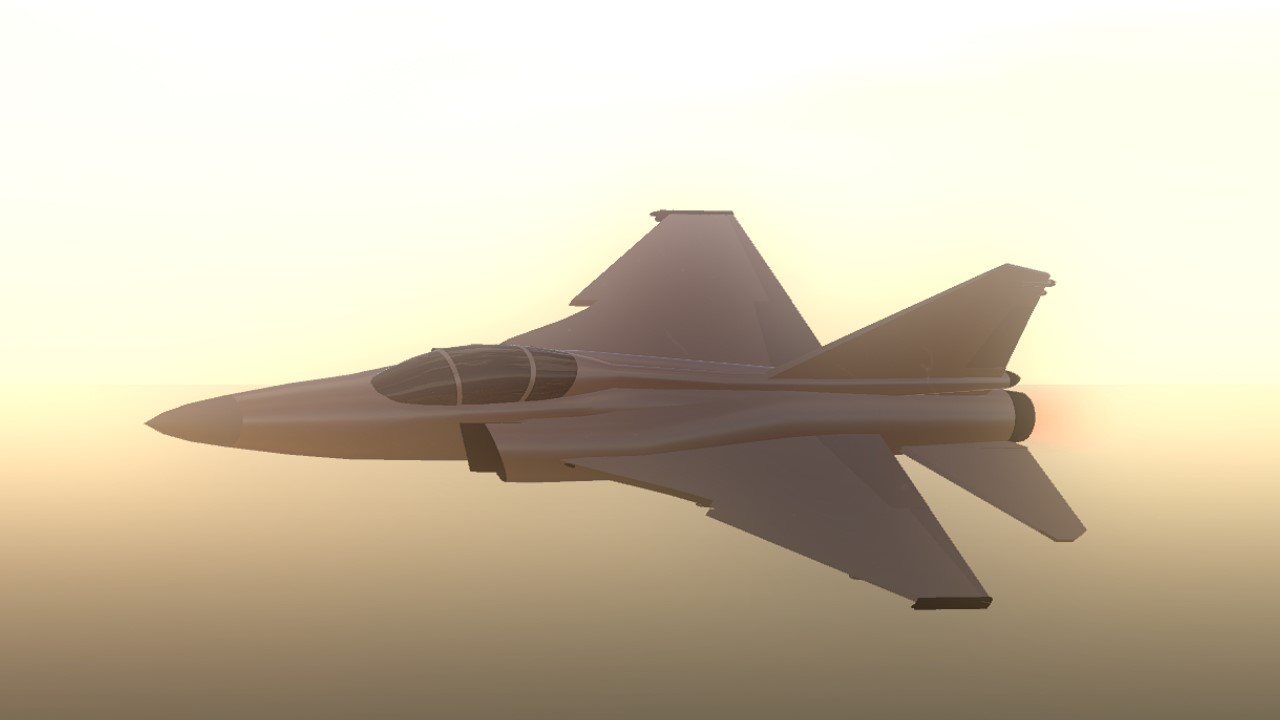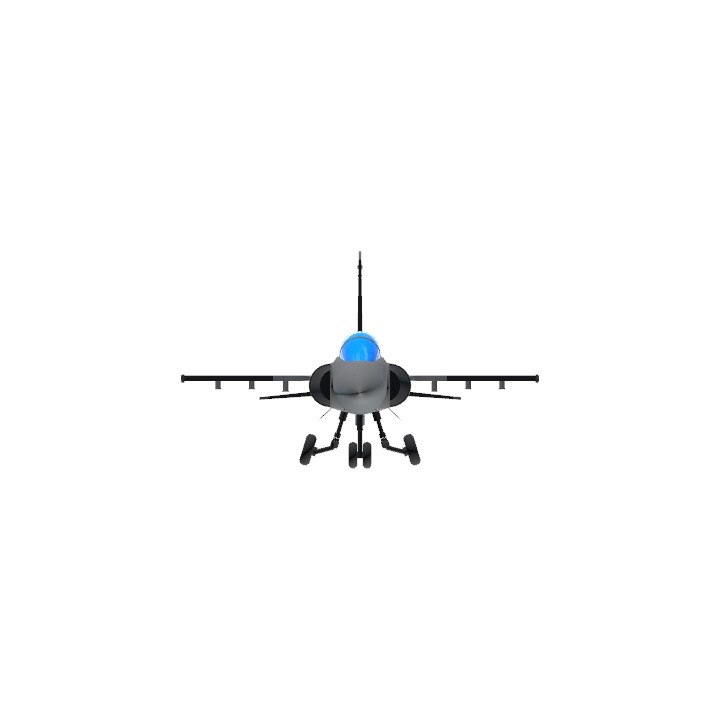AG1 - Parachute
AG6 - Middle pylon
AG7 - other pylons
[FICTIONAL]
D-6, or "Design 6" is a supersonic-capable light multirole fighter designed in mid-70's by the [...] bureau.
During late 60's the [...] air force higher-ups were coming up to the same conclusion: they needed a fast, light and heavy-lifting multirole jet fighter. Works on the initial design began in 1969, with the best performing variants being given to the air force, so they'll choose the one that would fit better for them and satisfy their demands.
The first flying prototype took off for the first time in the early 70's, flying for about five minutes and landing safely, without the parachute being deployed, although the runway that was used in testings was shorter then the normal ones, since it wasn't modernized in decades. That landing has proven something peculiar to the generals: D-6 could perform really short landings. Designers were well aware of that, since they've made the flaps much bigger than usual, and they were also linked to the pitch and roll inputs to increase control at high anles of attack, since these huge flaps made the tail horizontal stabilizers useless by obstructing the airflow over them when they were deployed.

D-6 has a big high-mounted delta-shaped wing with small leading edge root extensions, increasing it's maneuverability, reducing drag as well as making it produce more lift, allowing the plane to carry way heavier payloads, that other jets in service at that time simply couldn't take off with. On the other side, turning hard makes the plane drastically lose it's momentum, which is a fair tradeoff, considering the benefits these wings provide.
D-6 has one powerful [...] afterburning engine, though it's monstrous fuel consumption made it so the said afterbuner would be used ONLY when absolutely necessary. With the help of this engine, the plane could achieve true air speed of 1250 km/h at sea level and 1750 km/h at altitude (10km).

In terms of armament, D-6 easily outperforms the other light jets of that era, having 9 hardpoints (one wingtip - three wing - one belly pylons) that could carry almost any weaponry [...] air force had at that time. Wingtip pylons usually had short range air to air missiles, middle pylon could carry additional fuel pod, and wing pylons did all of the hard work. One pylon on each wing was extra reinforced, allowing it to carry almost anything heavy that other pylons couldn't.

(D-6 with air-to-air loadout, 2 short range and 4 long range missiles, as well as fuel pods on the 4th and 6th reinforced pylons)
Ease of manufacturing and maintenance of the D-6 made it the most produced [...]'s single-engine fighter, with around 3500 airframes being built and upgraded between 1970 and 1995, retiring in 201X. Though after retirement from the service in the [...] air force, it still was operated by other countries which had them bought.
D-6 took part in almost every conflict of that time, being used as an interceptor, frontline fighter, air superiority fighter and ground attack light fighter-bomber, respectfully securing the "multirole" status amongst the [...] air force.

(D-6 in a low-level patrol flight in [...] desert, 197X).

(D-6 scoring direct hits on the [...] convoys, operation "[...]", [...], 198X).

(D-6 with two fuel pods taking off for a reconnaissance mission, 197X).
As time went by and newer electronics were developed, a modernisation program was launched to replace the older D-6's with an upgraded, two seater variant (designated D-6 M, " M" for "modernised"), but due to the high costs and the use of expensive cutting-edge technologies, only a handful would be built. Nevertheless, D-6 served well for the [...]'s air force, marking down the start of the new era in military aviation with it's performance and capabilities.
Specifications
Spotlights
- TheUltimatePlaneLover 1.2 years ago
- DISHWASHER2005 1.2 years ago
General Characteristics
- Created On Windows
- Wingspan 21.7ft (6.6m)
- Length 43.7ft (13.3m)
- Height 13.2ft (4.0m)
- Empty Weight 8,742lbs (3,965kg)
- Loaded Weight 14,568lbs (6,608kg)
Performance
- Power/Weight Ratio 1.095
- Wing Loading 55.2lbs/ft2 (269.7kg/m2)
- Wing Area 263.8ft2 (24.5m2)
- Drag Points 3
Parts
- Number of Parts 88
- Control Surfaces 5
- Performance Cost 427






https://www.simpleplanes.com/a/itPhv6/A-Sara-zec-170C.
This stupid plane
The [,..] had a captured zec fighter (post my jet pls
cool plen
As always, incredible. Not going to ask for realism and lore, but the [...] Bureau didn't made any other Designs such as 4 or 5, maybe they were prototypes. Who knows?
woah, fictional plane?